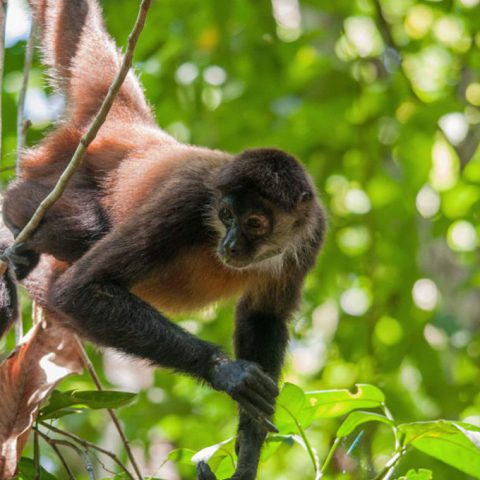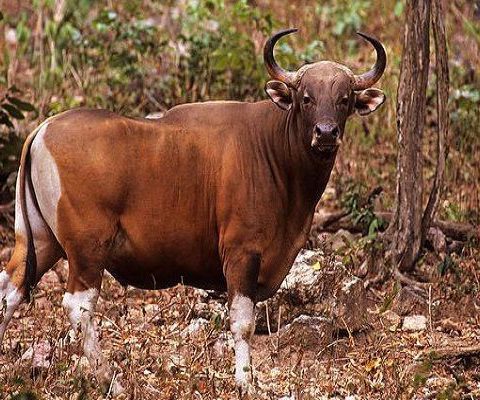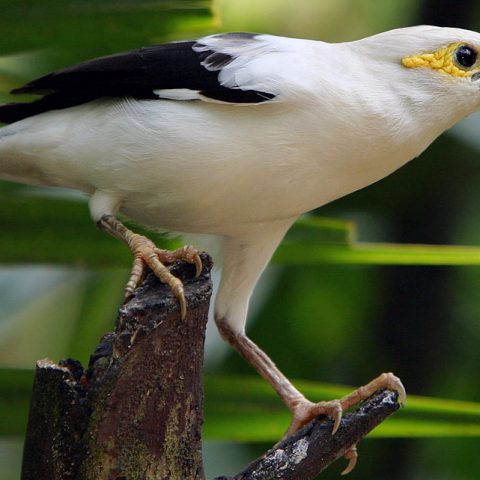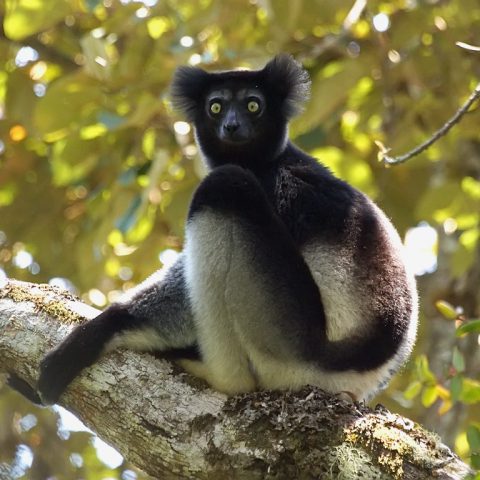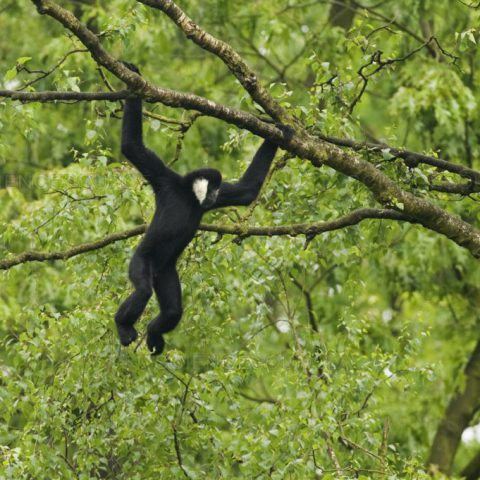Mountain Gorilla
![]() Critically Endangered
Critically Endangered
Population
700 – 790 are estimated to remain
Size
130 to 150 centimetres standing tall
Weight
100 – 195 kilograms
Countries
Uganda, Rwanda & Democratic Republic of Congo
Distribution
The estimated population of Mountain Gorillas is estimated to be around 700 – 790 animals split between the Virungas and Bwindi populations. The population had reached as low as 280 individuals in the 1980s and has slowly risen since that time. However there are concerns on the accuracy of the remaining number as the species is very hard to get an accurate count on.
The Mountain Gorilla has two main populations which it is distributed:
- Virunga – found in the Virunga Mountains, estimated to be around 480 animals. It is known that there are 14 solitary Silverbacks and 36 family groups
- Bwindi Forest – and estimated 306 animals
Description
The Mountain Gorilla is an imposing animal with an upright standing height of up to 1.5 metres and weighing up to 195 kilograms, with the males of the species often being twice the size of the females. This gorilla species is the second largest primate, behind the Eastern Lowland Gorilla.
The Mountain Gorilla typically has thicker and longer fur than other gorilla species. This allows the species to live in the colder areas of the mountains.
Other features of the Mountain Gorilla include:
- Each Mountain Gorilla can be identified by unique nose prints
- Males have a more bony crest on the top and back of their skulls, leading to more conical shape
- Adult males are called silverbacks due to silver coloured hair that grows on their backs as they age
- Arm hair is much longer than the hair on their backs
- Like all great apes, its arms are longer than its legs



Quick Facts
- The Mountain Gorilla is mostly terrestrial and quadrupedal. It will however climb into fruiting trees if the branches can hold its weight. They can even run bipedal for up to 6 metres. The species walks by knuckle-walking by supporting its weight on the backs of its curved fingers
- The species is most active during the day between 6am to 6pm. Most of the time is spent eatings as the species needs very large quantities of food to maintain its size.
- A typical day consists of foraging in the early morning, resting during the late morning and around midday, with the afternoon being more foraging before resting at night.
- Each animal builds a nest from the surrounding vegetation to sleep. This is done every night and the infants sleep with their mothers. The animals will sleep in on cold and overcast days!
- The species is very social and live in groups which are founded on long term bonds between males and females
- The silverbacks defend the group instead of territory. The dominant silverback has a tenure of around 4.7 years.
- Group sizes range from 5 to 30, but with an average of 10. A typical group contains the dominant silverback which is the undisputed leader, a subordinate silverback which is often a younger brother or son, one or two blackbacks which act as snetries for the group, three or four sexually mature females, bonded for life to the dominant silverback and three to six young and infants. The young will eventually leave the group, but it is a slow process often taking around 11 years for males and 8 years for females. Males slowly edging out of the group and leaving. They may travel alone or with an all-male group for 2–5 years before they can attract females to join them and form a new group, while females often transfer directly to a new group or begin one with a male. They often transfer multiple times before settling with a single silverback.
- The dominant silverback will determine the movements of the group, as well as protects the group from humans, leopards and other gorilla attacks, even at the cost of its own life. Experienced silverbacks are even known to be able to remove poacher snares from the hands and feet of other gorillas
- When a silverback dies, the group may be disrupted if there is no accepted male descendant able to take over the position. The group will either split or adopt an unrelated male as the silverback. It is known that a new silverback may kill the infants of the deceased silverback although this is rare
- The species is strong and powerful, but are however gentle and incredibly shy. Fights to the death can occur between opposing silverback gorillas, however most conflicts are resolved by displays of intimidation. The charge display as it is known has 9 steps:
(1) progressively quickening hooting, (2) symbolic feeding, (3) rising bipedally, (4) throwing vegetation, (5) chest-beating with cupped hands, (6) one leg kick, (7) sideways running four-legged, (8) slapping and tearing vegetation, and (9) thumping the ground with palms .
- The midday rest period is a time used to establish relationships in the group as well as grooming and reinforcing social bonds. The young will often play in this period, with activities such as wrestling, chasing and somersaults
- The group has 25 different vocals which are recognised and used to communicate in dense jungle, including grunts, and barks when travelling. The vocals are also used for discipline, alarms and warnings by the silverback
- Silverbacks have strange fears of chameleons and caterpillars. They are also afraid of water in rivers and rain
The diet of a Mountain Gorilla consists of around 150 different plants and they consume the shoots, leaves and stems. They prefer shoots of bamboos in the rainy season and especially enjoy black berries in the dry season. An adult gorilla with eat around 27 kilograms of vegetation a day.
The species will also eat bark, roots, flowers and fruit, but these are far less consumed than stems, shoots and leaves.
The species inhabits the Albertine Rift cloud forests of the Virunga Volcanoes and are found ranging in altitude of 2,200 – 4,300 metres. The majority of Mountain Gorillas are found on the slope of 3 dormant volcanoes, Karisimbi, Mikeno and Visoke which all have very dense vegetation at the bottom of the slopes. The habitat where the gorillas are found are forests which are often cloudy, cold and misty.
The main threats that face the Mountain Gorilla are:
- Habitat Loss – the clearance of forests as the human population of the region grows is a real threat to the species
- Disease – gorillas are very closely related to humans and are vulnerable to similar diseases. However they have not developed the immunities to the diseases which humans have and a simple disease or illness in a human can cause major damage to the population of Mountain Gorillas. For this reason, humans pose a tremendous threat to the species
- Poaching – although no longer actively hunted for food, snares for other animals can kill and injure the species. However poachers trying to capture baby gorillas still pose a threat
- Civil unrest and conflict – as the species lives in a higher volatile area for human civil unrest, they can often be the innocent consequence of events in the region
Conservation Efforts
The Gorilla Organisation
This excellent organisation, The Gorilla Organisation has many projects across the Congo, Rwanda and Uganda. These include supporting rangers who are in the field protecting the animals, helping local communities with farming and beekeeping and education of children throughout the area.



